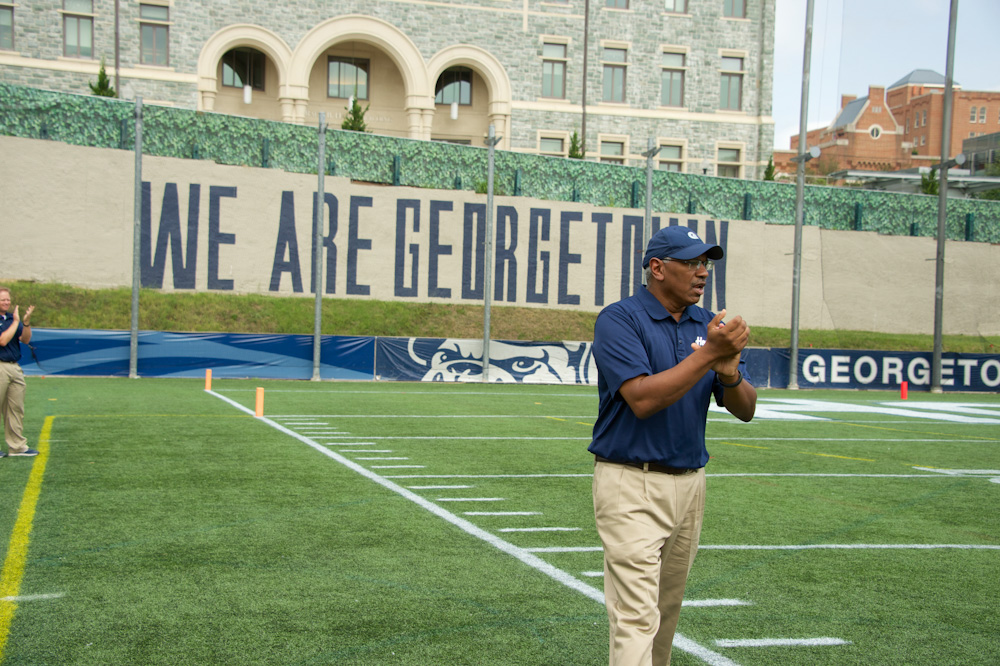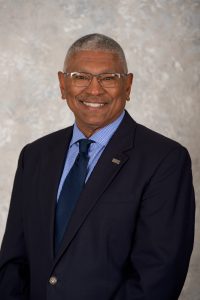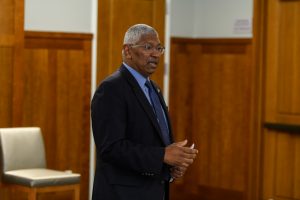
“It comes down to fit and alignment, I think the opportunity to work for an amazing institution like Georgetown University that values the holistic development, not only of the student-athletes but also the people within the department. We truly place value on the student part of the student-athlete.” -Lee Reed, Georgetown Director of Athletics
Lee Reed arrived at Georgetown University in April of 2010 as the 17th director of intercollegiate athletics. He credits the values of the university as part of the reason he’s been successful at the helm for almost a decade. 
“We have coaches that recruit good kids, who are good students, who happen to play a sport really well.”
Reed gives the example of Georgetown’s Golf Program under Tommy Hunter. He says the scholarships are limited in that program they have won two of the last four Big East Championships. He credits Hunter with positioning the team to win championships.
“We are competing against schools with a lot more scholarships,” explains Reed, “but the kids come to us because they love Georgetown. They love the location, the history, and the fact that they can get a great degree from the university and they happen to swing the club really well. That’s the kind of student-athlete that comes to Georgetown.”
 Reed says those students value becoming part of an athletic legacy going back 150 years. The University’s athletic history dates to the early beginnings of intercollege competition in the United States. The first officially recorded intercollegiate athletic event involving Georgetown was a baseball game played against neighboring Columbian College on May 10, 1870. This year they are celebrating that milestone.
Reed says those students value becoming part of an athletic legacy going back 150 years. The University’s athletic history dates to the early beginnings of intercollege competition in the United States. The first officially recorded intercollegiate athletic event involving Georgetown was a baseball game played against neighboring Columbian College on May 10, 1870. This year they are celebrating that milestone.
“There’s a lot of people who have come before us and we have a great responsibility to move the tradition and legacy on.”
Under Lee Reed, that legacy has continued. During his first year as athletic director, the school won the women’s cross-country national championship. It was the second NCAA championship for the school, the first was a championship win in 1984 by the men’s basketball team. In 2012 the men’s soccer team was a national finalist, the women’s soccer team has been to two of the last three college cups. The success has contributed to the growth on campus.
“The Thompson Athletic Center has meant so much to the experience of student-athletes and coaches. That was a $60 million training facility with 140,000 square feet. It gave us a state-of-the-art space to do our very best.”
The Thompson Athletic Center houses practice courts, locker rooms, team meeting rooms, lounge areas and coaches’ offices for men’s and women’s basketball. Reed explains that there are also meeting and academic spaces within the center.
 “It made us a much more efficient athletic program and brought each program together and serves as a hub of activity in our department. When I got here we had 6 locker rooms for 29 varsity programs, now we have dedicated locker room space for every one of our programs.”
“It made us a much more efficient athletic program and brought each program together and serves as a hub of activity in our department. When I got here we had 6 locker rooms for 29 varsity programs, now we have dedicated locker room space for every one of our programs.”
But the development of the student-athletes goes way beyond facilities. Under Reed, the university has established The Cooper Athletics Leadership Program. The program combines a transdisciplinary, academically-grounded approach to the study and practice of leadership dynamics in an intercollegiate athletics environment. The program, funded as a part of a $50 million gift from Georgetown parents Peter and Sue Cooper.
“It really helps our student-athletes leverage their athletic experiences after they leave campus. We were charged with raising money and the process received the two largest gifts in the university’s 150-year history.”
Reed explains that the Cooper Program helps the student athletics discovery who they are as people, not just athletes.
“That’s what we want as the Georgetown experience, develop who you are as a leader, as a person, and as an athlete.”
